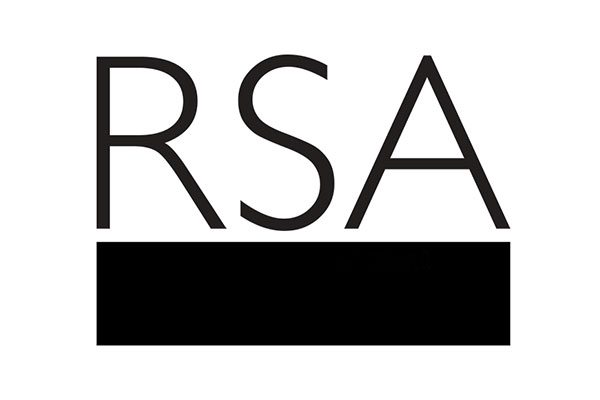Agata Lo Tauro and Maurizio Fantato offer their thoughts on how innovation can supplant outmoded structures of public governance.
On 22 May, the Declaration on Innovation in the Public Sector was adopted by the OECD and therefore by all of its members - of which the UK is one. A declaration is an official document that sets general principles or long-term goals among members and has, according to the OECD’s own explanation a “solemn character”.
The important document intends to give legitimacy to innovation as an essential and strategic activity for all public bodies, but also private and for all the people who work there. Usefully, the Declaration, which has been prepared for many years of joint work within the Organization's Observatory of Innovation in the Public Sector (OPSI), also relies on a campaign involving stakeholders under the slogan "declare to innovate” where Public Managers and other organisations are invited to sign up to it, adhering to its principles.
The theme of Innovation in the public sector is close to the RSA too, recognising some of the challenges that are particularly present in the UK public sector after years of austerity (though this experience could easily be transposed across several other countries in the EU and other developed nations). Other organisations like NESTA have also dedicated some efforts on Innovation in public sector organisations, though primarily as part of wider research on innovation in general.
The premise
The declaration starts from the observation that governments and public administrations (including educational institutions) operate in a context characterized by volatility, uncertainty, complexity and a certain degree of ambiguity and that in this context they must face important challenges such as transformation digital, energy strategy, environmental degradation, climate change and the growth of inequalities.
Within this context, current structures, mechanisms and measures may no longer suffice: constant innovation is therefore the only means of responding to the expectations of communities and citizens. But innovation also requires fighting against conservatism and the tendency of organizations to maintain the status quo (a barrier which every forward looking public servant is likely to experience quite frequently).
Methodology
The Declaration proposes the creation of a “portfolio management” made up of diversified and wide ranging actions that can be made resilient to absorb also the risks of possible failures. There are four aspects of innovation that the Declaration highlights:
- A dimension of innovation based on continuous improvement with the aim of modernizing what is already done and developing existing structures to the best;
- A dimension founded on the institutional missions, on its priorities so as to draw new methods and new approaches;
- An adaptive dimension of innovation that intervenes following new facts or profound changes that occur in society and in the technological panorama;
- Finally, an anticipatory dimension of innovation that aims to explore emerging issues that will lead to future priorities.
The five guiding principles
This pluralistic approach to innovation forms the basis of the five guiding principles at the heart of the Declaration and these are:
- Adopt and encourage innovation in the public sector through constant attention, a fair investment of resources, a multidimensional approach, respect for the decentralization of functions and responsibilities.
- Encourage all public workers to innovate and give them the means to do so by facilitating learning through mistakes, accepting the risks that each innovation entails, clarity of responsibilities, the acquisition of the necessary skills, the implementation of structures of support and support for innovation itself.
- Cultivate new partnerships and listen to different points of view by relating different actors, using formal and informal networks already active, promoting international exchanges, focusing attention on new needs and new ways to satisfy them.
- Promote the exploration, experimentation, realization and interaction of tests by focusing on an experimenting and exploratory innovation, which develops and spreads validity tests, which recognizes the fundamental role of innovation not only to produce solutions, but also to learn.
- Disseminating the lessons learned and sharing good practices by making the lessons learned available, encouraging shared contacts and learning, creating virtuous circuits of knowledge that allow citizens and public employees a continuous learning, finally realizing good evaluation practices to guide the process innovation.
A new vision?
Innovation and the Public Sector have been unlikely bedfellows for too long. Innovative services and technologies widely adopted in everyday living have struggled to get traction into the public service. Creative public servants and citizens have often been frustrated by the slow adoption, or total failure to innovate.
Innovation failure in public service has been caused by many factors. The most common one being the misunderstanding that innovation could always be met by complex technology solutions (inevitably very expensive too), with the expectation from politicians that bringing innovation to the public sector required extensive investments and modest short term returns. In Britain the “NHS IT modernisation failure” is a case in point.
Frequently, failure to use the right methodology (e.g. waterfall as opposed to agile), insufficient attention to users behaviour, excessive attention to internal stakeholders, lack of clear internal processes or undefined command structures have been some of the causes behind the collapse of innovative public sector schemes. Lastly, public services all over the world are riddled with ancient regulations that seldom transfer well to modern processes and corresponding technologies, so a degree of political sponsorship is also required in order to update those rules.
Things can go well too and in Britain, for example, the launch of gov.uk has been a splendid model of the right kind of innovative approach in the interface between public services and end users, offering a simple and easily accessible way to provide essential services such as passport applications, drivers license renewals and so on. There is also hope therefore that at long last the public sector might be moving in the right direction.
It’s obviously hard to argue against any of the points made by the Declaration and above all it’s refreshing to see active encouragement on experimentation, collaborative governance and partnership with outside bodies strongly embedded into it.
Across the OECD however, equipping public servants with the required knowledge skills and baseline technology (modern software and hardware), within already stretched working environments created by decades of austerity cuts needs to be made a priority. Embracing the Declaration may also necessitate having to put in place parallel frameworks and processes, grafted into existing departments and organisations that are often themselves either undergoing radical restructuring, or may have inherited archaic infrastructures and working processes.
We have seen how much innovation can often be introduced with comparably modest efforts and with great returns like in the gov.uk example. However, this approach requires strong support from senior public servants and politicians alike, together with the necessary cultural shift away from decision by large committees and towards smaller and agile teams entirely focussed on addressings users’ real needs, not those perceived by managers or politicians.
The Declaration can therefore provide a smart instrument for those forward looking public servant in order to justify the implementation of much needed innovation portfolios. This cannot happen a minute too soon, especially in creaking western democracies, where it is now becoming increasingly more evident that 19th century structures of public governance are no longer adequate for the ever changing needs of life in the new millennium.
Related articles
-
Is the boom in private tutoring fuelling inequality in education?
Susannah Hardyman
RSA Fellow Susannah Hardyman on the affects of private tutoring on attainment gap of students in the UK
-
The Basic Income movement has taken root in the North – let’s keep spreading the word
Jonny Ross-Tatam
RSA Fellow Jonny Ross-Tatam on the campaign for Basic Income in the North of England.
-
Looking to the Skyline – can land reform transform Valleys communities?
Chris Blake
Chris Blake FRSA explores how community stewardship of the land could transform the south Wales Valleys communities. Originally posted on the Institute of Welsh Affairs website.




Join the discussion
Comments
Please login to post a comment or reply
Don't have an account? Click here to register.
Dear RSA friends,
Please also read Lo Tauro, A (2020) Environmental Risk and Novel Technologies: Mobile Gis Based Application and Google Flood Alert for flood warnings for Heritage Conservation – EcoCity Let networks https://www.linkedin.com/posts/chinwilson_flood-alert-activity-6619065386707054592-8ny4/ The post has trended in #dubai...
All the best to all of you! :-)
PS - Innovation also means research of Innovative Solutions for Novel Umanitarian Approaches
Please visit my LinkedIn profile https://it.linkedin.com › agata-lo-tauro-6723257b (for other volunteer activities, including TECH-WORK - Implementing a novel multidisciplinary network for Innovative Humanitarian Researches
Other Post in International Scace Agency (ISA) Network, etc...
A widely discussed topic (books, journals, etc.)!
We acknowledge that innovation in the public sector can bring radical improvements to the quality and efficiency of public services, by encouraging the development and validation of breakthrough solutions. In this respect, we can offers management services to support both sides of public and private authorities, SMEs and start-ups to apply at Pre-Commercial Procurement ant other sources that are running and support the public demand-driven innovation in Europe and in the world needed to close the gap between supply and demand for innovative ICT solutions.
Thanks a lot Agata and Maurizio.